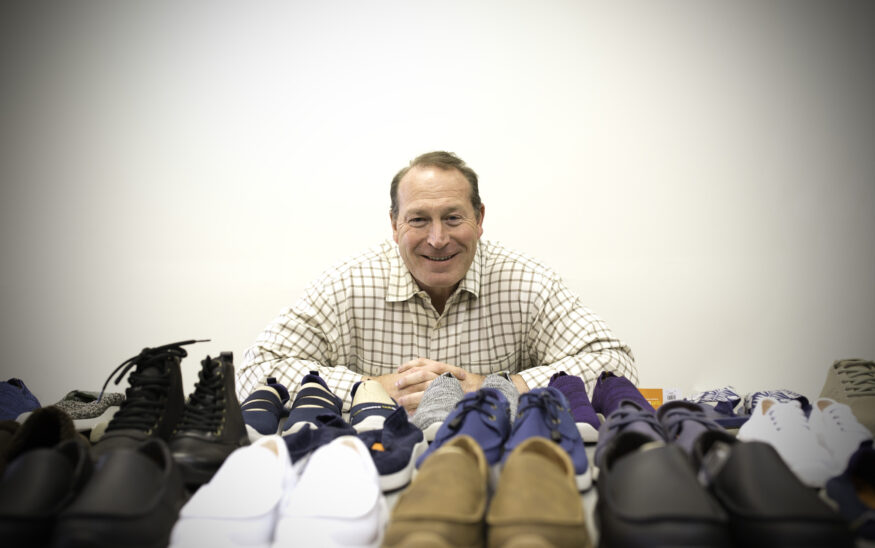Introducing New Products in Competitive Industries
Strategies to bring your product to market and earn a fan following
Kevin Lamar //March 9, 2018//


Introducing New Products in Competitive Industries
Strategies to bring your product to market and earn a fan following
Kevin Lamar //March 9, 2018//

Bringing new products to market, whether from a new or established brand, never gets easy. Take it from someone who has helped Bowflex, Schwinn and now Soft Science navigate the difficult task of launching new product lines and brands.
Though you do pick up guiding principles and strategies along the way that increase the chances of success, part of the thrill is that there's little on which you can count, making each launch a unique sales and marketing puzzle to solve.
HAVE A REASON FOR BEING, OR FAIL
This is one of the only certainties in introducing new products.
People need a reason to buy; retailers need a reason to stock. So you need a reason to be out there selling.
The common refrain you hear in a competitive industry is,
You should be able to reply: "You've got nothing like ours."
Strong differentiation is the key to winning early converters and garnering distribution channels. And it better not be easily repeatable, or your differentiation won't last long enough for you to secure a footing in the market.
Take, for instance, Soft Science shoes, which are made from Trileon™ material, providing more support than other footwear, slip-resistant, lightweight, anti-microbial and, as a bonus, they can float. Trileon™ has competitive advantages. Podiatrists supported the product, and, without any concerted push, fisherman as well. The shoes sold themselves.
START SMALL, START NICHE
Even if you have the money to go mass-market and take on established brands and products, there are still a number of reasons to start small, at least in the beginning. The primary reason? It gives you agility to build communities of fiercely loyal brand advocates.
Starting small lets you quickly shift time and spend toward dominating the niches where sales are actually occurring. You can identify and win over their influencers. You can offer opportunities to experience the product first-hand, as well as robust return policies to reduce friction of buying a new product. And you can invest time and effort in having meaningful conversations with your customers, to strengthen relationships and improve your product.
As president of Schwinn/GT Cycling following their move to Boulder, we did not have much in the way of mountain bikes at the time. Shortly after arriving, we turned to the passionate mountain biking community in Colorado, listened to their feedback on our bikes and the industry in general, and used that information to drive innovations that catapulted us to the front of the market.
CONCENTRATE ON ADVENTUROUS MARKETS
More than ever, consumers are turning to brands to help navigate the overwhelming mix of products available buy what you trust and don't sweat the minutiae. At the same time, many retailers, faced with the existential crisis that is channel conflict mayhem, and have become safe, only committing to brands and inventory that are guaranteed to disappear off the shelves limiting opportunities for new company innovations.
But there are still markets where consumers are more open-minded, less brand-loyal, and willing to try new innovations. Denver is one such market, and is ideal for centralized distribution.
If you're not such about a market, look at the state of its economy. Where there is a culture of innovation, where new businesses pop up and find success, there is a consumer base that is open to innovations. Look to the retailers, which ones are eager to test innovation, when they are eager to push the envelope with what they carry, they're reflecting a consumer base that is eager to try new products.
TAKE ADVANTAGE OF DIRECT-TO-CONSUMER
If retailers are giving you a hard time though, don't lose hope – You still have direct-to-consumer. While wholesale dictated success in the past, markets are shifting to enable companies to have a direct relationship with the customer and to market to them in a B to C manner.
With a solid social and digital advertising program, integrated with the occasional traditional marketing, you can build viral sales. When word makes it back to retailers who turned you down, from consumers looking to buy your product, your wholesale problem will disappear.
That's how we found success when I was head of marketing and sales at Bowflex. Retailers only cared for plate-lifting machines, and couldn't see the benefit of carrying an alternative resistance-conditioning line. But an extremely successful direct-to-consumer campaign quickly earned buy-in from retailers, helping build a big business.
THE BOTTOM LINE
In short, only bring a new product to market if you have a good reason to introduce the product. Where possible, avoid sparring with the big brands in the markets they own. Instead, leverage your differentiation to dominate a niche, because the power is now in consumers' hands. If you can convince a small, devoted handful that yours is the product the market has been waiting for, they'll work with you to help you sell the product to others. Launching products isn't nearly as scary or risky with people fighting alongside you.
Kevin Lamar is the president and CEO of Soft Science LLC, a comfort, casual footwear company based in Denver. Innovators Scott Seamans, the founder of Crocs, and John Duerden, a former president of Reebok started the company in 2013. Today, the company sells shoes in more than 200 retail store networks and is actively seeking retail partners in Colorado.
























